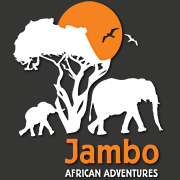Etosha National Park Overview
Etosha National Park is Namibia’s premier nature reserve and one of Africa’s largest. It has great concentrations of game, especially in the dry winter months, and there are wonderful views out onto the saltpans. It protects 114 species of mammals along with 340 species of birds. Originating as a shallow lake, the Etosha Pan dominates the park and is an immense, flat, saline desert of more than 3500 square miles.
Now, in years of good rain, this depression becomes a temporary lagoon full of white pelicans and flamingos. Birdlife around the waterholes is good, with ostrich, pygmy falcon and all the raptors in abundance. Some of the local “specials” include short-toed rock thrush, Hartlaub’s francolin, freckled nightjar and Meyer’s parrot. Famous for its large herds of elephant, Etosha is also home to lion, leopard, black rhino and all of Namibia’s plains game including springbok, gemsbok, and hartebeest.
Climate
The semi-desert landscape of Etosha is almost bereft of rainfall during the Dry season (May to October). Temperatures can go as low as 7°C/45°F in the early morning for most of this season; only in September and October does the weather start to get hot. Etosha’s Wet season (November to April) continues with the heat, with nighttime temperatures of around 17°C/63°F.
NAMIBIA TOP DESTINATIONS
› Damaraland› Etosha National Park
› Namib Naukluft National Park
› Skeleton Coast
› Sossusvlei
› Waterberg Plateau Park
Etosha National Park
Etosha is located 435km/270mi north of Windhoek. It is easy to visit either independently (self-drive) or via a tour. The drive on paved roads takes about six hours. The roads in the eastern section of the park are accessible by 2WD car. There are no scheduled flights, but there are three airstrips inside the park for charter flights. Most of the upmarket lodges outside the park have private airstrips as well. Those driving themselves, as well as those on organized tour, generally start their trip by arrival at Hosea Kutako International Airport (WDH; located 40km/25mi east of Windhoek) and, from there, by 4x4 vehicle. Fly-in trips are also common, consisting of chartered flights taking travelers from park to park.
Wildlife viewing is outstanding in the Dry season (May to October) when animals congregate around the waterholes. Elephants are abundant. Big herds of blue wildebeest, zebra, springbok and gemsbok are often seen drinking together at a waterhole. Giraffe and eland might join as well. Big cats are spotted at dawn and dusk and black-backed jackels are very common. There are, however, no buffalos, hippos, crocodiles or monkeys.
About one-third of the 340 bird species recorded in the park are migratory; including a good number of waders attracted to the Etosha pan in the Wet season. The pan is an important breeding ground for lesser and greater flamingos. The desert habitat is excellent for seeing a wide variety of birds of prey – up to 35 species, including many hawks, vultures, eagles and falcons. Migratory birds are present from November to April.
Best Time to Visit
Etosha is open year-round, but wildlife viewing is at its best during the dry winter months from July to October. Less water is available during this time and the animals tend to gather around the few sources that are available. The Wet season (November to April) is less productive for spotting wildlife because the animals tend to move around more.








